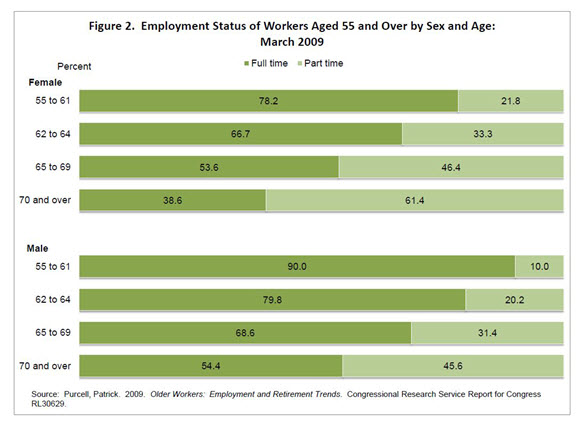
An official website of the United States government
Here’s how you know
Official websites use .gov
A .gov website belongs to an official government organization in the United States.
Secure .gov websites use HTTPS
A lock (
) or https:// means you’ve safely connected to the .gov website. Share sensitive information only on official, secure websites.
-
//
- Census.gov /
- Census Blogs /
- Random Samplings /
- Older Workers Are Staying Longer in the Workforce
Older Workers Are Staying Longer in the Workforce
Older Workers Are Staying Longer in the Workforce
Participation in the labor force has been rising for older adults for the past decade or longer. By 2010, the labor force participation rate for the population age 65 and older reached 22.1 percent for men and 13.8 percen t for women, up from 17.7 percent and 9.4 percent, respectively, in 2000. In contrast, labor force participation for the U.S. population 16 and older fell from 67.1 percent in 2000 to 64.7 percent in 2010.
The recent upward trend is a reversal of the decades-long decline in participation rates for older men (see Figure 1), according to a new report titled 65+ in the United States: 2010. The introduction of the Social Security system and the provision of health insurance through Medicare contributed toward earlier retirement for many in the 1960s, 1970s, and 1980s. For women, the recent upward trend followed decades of relative stability.
Several factors may contribute to the recent rise in labor force participation for the population 65 and older. One likely factor is the shift from defined-benefit pension plans (based on years of service with guaranteed payments in retirement) to defined-contribution retirement plans (based on employee and employer contributions and dependent on investment returns). Another potential reason is the rise in the Social Security full retirement age, which reaches age 67 for those born in 1960 and later. A third influence could be the increased life expectancy and improved health of the older population.
The upward trend persisted through the 2007-2009 recession. While the recent recession forced some workers to retire sooner than planned, it also pushed workers to delay retirement. Many older workers managed to stay employed during the recession. In fact, the older population was the only age group not to see a percentage decline in employment from 2005 to 2010.
Many older workers choose to transition from full-time employment to part-time employment before full retirement. For workers 70 and older, nearly half of employed men and the majority of employed women were working part time as opposed to full time (see Figure 2).
Publication
Publication
Related Information
PUBLICATION
65+ in the United States: 2010Share
 Yes
Yes
 No
NoComments or suggestions?


Top


